Celia Lake's Blog, page 4
July 17, 2024
Cover Design: Mysterious Fields
For the last of our current series of posts about cover design, it’s time to share the covers for the Mysterious Fields trilogy. I love the elements Augusta pulled together to evoke just the right feeling for these covers.
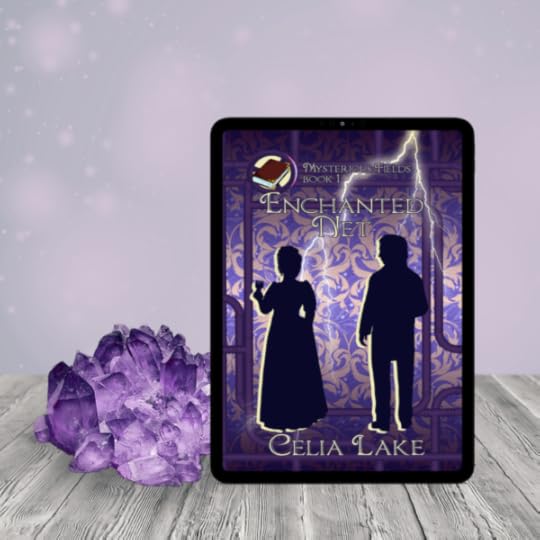 Overall design : Mysterious Fields
Overall design : Mysterious FieldsBecause these three books form a tight continuous trilogy (unlike any of my other books!) we really wanted the covers to fit well together. All three have the same basic elements:
Damask background (for the late Victorian feel)Appropriate clothing! Augusta worked off a number of reference images for this. Electricity (a key theme in the books)An inset item Silhouetted figures who – over the course of the trilogy – move from distance to togetherness.And then we have the pipes, to lean a bit more into the gaslamp feel of these books. People are exploring the intersection of science and magic, not always with the best results.
Enchanted Net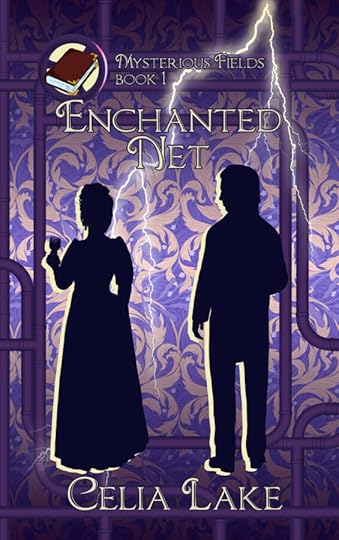
Welcome to Enchanted Net, book one of the trilogy!
This cover has a lovely scene from early in the first book, when Thessaly and Vitus first meet at a masquerade ball. (He has kindly fetched her a glass of wine.) In a later scene, they run into each other in Trellech’s main library. That’s where the book in the top corner comes from.
The purple is here for the Fortiers – it’s part of their heraldry. Enchanted Net opens with Thessaly’s betrothal to Childeric Fortier, golden son of the Fortier family. (He’s an older cousin to Garin. Isembard’s not yet born at this point.) As you might guess by “Thessaly and Vitus have a happily-ever-after ending”, that’s not who she marries.
But it’s also purple for this scene, where Vitus’s costume includes amethyst (a nod to his work as a talisman maker).
Silent Circuit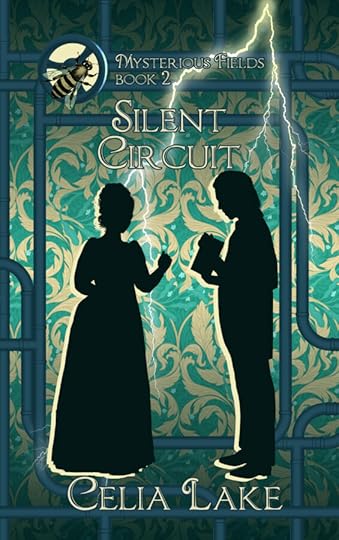
As Silent Circuit begins, Thessaly and Vitus have been unable to see each other. They run into each other in the Trellech library for a second time. Vitus is able to recommend a book that helps with one of Thessaly’s current problems. They’re not quite touching here, but they’re closer.
And that bee? The original Childeric, a Merovingian king, has a particularly famous set of grave goods.
The green of this cover is a nod to the land magic. This book includes a Council challenge, and Childeric’s role as Heir to the land magic at Arundel. (It also spends some time with the Fortier family rites for Lammas, at the beginning of August.)
Elemental Truth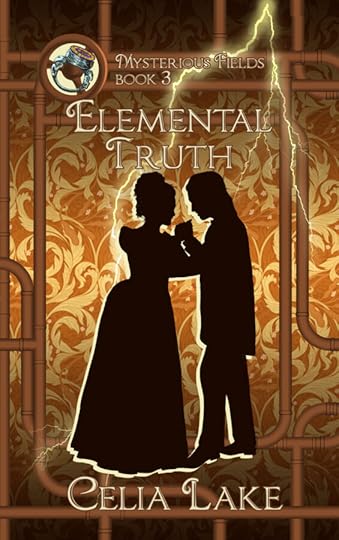
In the final book of the trilogy, Elemental Truth, we get to a satisfying conclusion. Here we’ve got the abundant generative golden yellow, a warm colour that brightens everything around it.
And here, Thessaly and Vitus get to dance together, unafraid to show their love. The ring in the corner is a nod to Vitus’s growing professional reputation as a talisman maker.
And a little more colourI was amused when I was updating the website and took a look at the current book grid for the Fortier and Landry families. Except for Winter’s Charms, they all have a remarkably similar feel to the colour palette. This wasn’t entirely intentional (especially that run of golden yellow), other than the fact I do like the shades we chose here. If you want to check the other books out, enjoy!
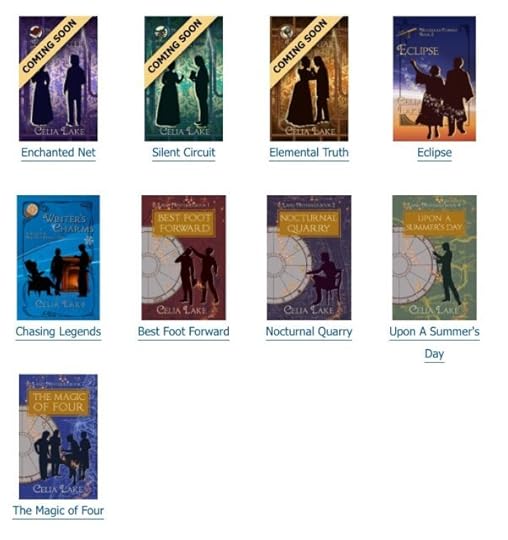
The post Cover Design: Mysterious Fields appeared first on Celia Lake.
July 3, 2024
Cover design : Land Mysteries
I’m back this post to talk about some of the choices that went into the cover design of the Land Mysteries books. As is visible, they take a different direction in some ways from my 1920s books. There are also a number of details you might not have spotted that I’ve been wanting to highlight!
One note that this post contains spoilers for key moments in the books (since that’s relevant to what’s on the cover). I’m avoiding talking about details here, as much as feasible. But if you want to avoid all spoilers, go have fun reading and come back when you’ve read the relevant books!
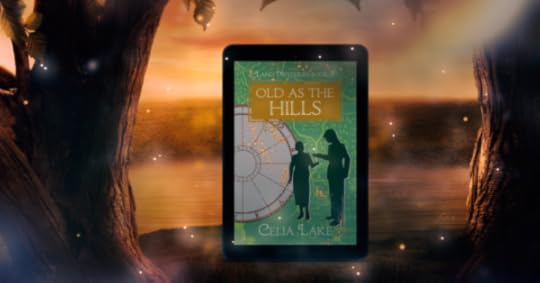 Overall
OverallWhen Augusta and I started talking about the covers for these, we kicked around a number of different approaches. What we came down to, eventually, was that these books are especially rooted in both time and place, in specific ways. That was true for every book in the series, though sometimes from varying directions.
(Thesan, of course, approves of both chronological and locational points of interest.)
The basic designWhat we chose was a map – a specific map for each book – and a moment in time – represented by an astrological chart. I floated it as an idea when I was working on Best Foot Forward, where the chart for that event is actually discussed in the text. But it worked for every book in the series! And we were pretty sure we could sort out relevant maps from available sources (that were out of copyright and covered the right areas).
The FiguresAs with all my books since my first series, the figures on each book are generated using a 3D modelling program. Augusta then overpaints to adjust any details. This allows us to get wonderfully specific about position, body type, and other details.
Here’s the test image of the figures for Three Graces. Alysoun’s sitting at the left, her cane visible. (And being Alysoun, she’s sitting entirely properly and formally, her ankles together and at an angle.) Lizzie’s standing in the middle, with a sharp hat. Thesan’s a bit broader shouldered, and she’s a little less on the edge of fashion.
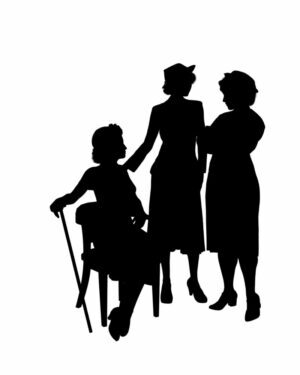
Augusta came up with a palette of WW2 era colours, and off we went!
Best Foot ForwardTo illustrate the series, I want to talk a bit about a range of details here, then I can be briefer with the later books. Each title in this series has three key elements: the map, the chart, and the figures.
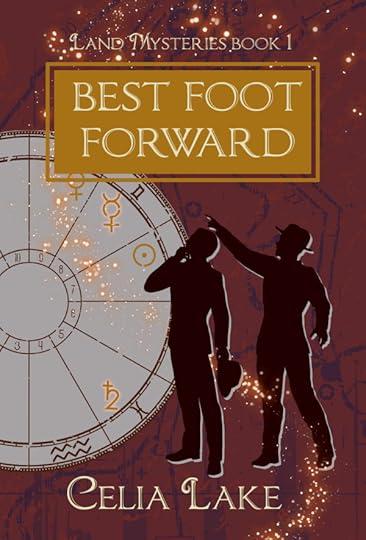 The map
The mapThe map in each book represents a specific location. For Best Foot Forward, it’s the area around Berlin, Germany, where a significant portion of the book takes place. Augusta found images that would work for each map, from a close enough time period. (We don’t want any modern highways or more recent construction popping up!)
The chartThe twining of astronomy and astrology is a complicated topic – for centuries, they were the same thing. Albion has kept the various uses of astrology for magical use, in a wide range of methods including ritual timing, certain materia harvesting or preparation, and more. (Check out my public Patreon post from June 2024 about this in more detail.)
Here’s what Alexander and Carillon say about this chart, when they discuss it, as part of their plans for a magical renaming. Carillon’s just handed over a chart and mentioned it wasn’t done by Thesan, but by someone else.
What a chart looks likeThe chart was neatly drawn. Spare, not fussing about with asteroids, just the seven principle planets and a handful of the fixed stars. “It’s not ideal, but needs must.” Besides, astrological timing was almost never uniformly ideal. It was instead a question of where you bent and bowed or kept a watchful eye.
He tapped his fingers, looking at the alignments. “That Saturn placement stands out, but the trine to Jupiter and Venus gives me some ideas for structuring the rite. Working against the challenge from the square to the Moon and Mercury. What’s his nature?”
“Not nearly so mercurial as I. I’d look to the Mars placement. Not warlike, but seeking the competition, wanting to be first with an idea made real. He’s never been purely theoretical, that’s the good and bad of it.”
Alexander nodded and grunted. “I can make this work. Assuming the binding is something I can manage, which I won’t know until I meet him. I’ll need a bit more time with it.”
Best Foot Forward, chapter 29
Here’s the chart I sent to Augusta to work with. I pulled it together from Asto.com, one of the venerable sources for such things.
It’s set for May 18th, 1935 in Berlin, Germany. Saturn is the thing that looks like an H with a line through the stem in the bottom right quadrant, Jupiter’s symbol looks like a 4 (between 8 and 9 on the clock face). Venus is the women’s symbol of a circle with a stem and a horizontal line for arms (around 2 o’clock on the face).
Without getting into too much detail here, blue lines indicate lines of ease and good relationship, red lines are more challenge. (And the fact that Venus, Jupiter, and Saturn make a visible triangle means they’re all in good relationship to each other.) The thing to know about astrology when it comes to “when do I do this thing?” (what’s called electional astrology) is that there’s basically never a perfect time. It’s always a trade-off.
Each chart is divided into 12 houses, those are the things numbered 1 (starting at 9 o’clock on the clockface) and moving counter clockwise around to 12. The houses do have all sorts of implications in reading or interpreting a chart, but I’m not getting into that here. Each house is also associated with a specific zodiac sign depending on when the chart ‘starts’ (the rising or ascendant). The little tiny letters around the outer edge indicate fixed stars (more about that below).
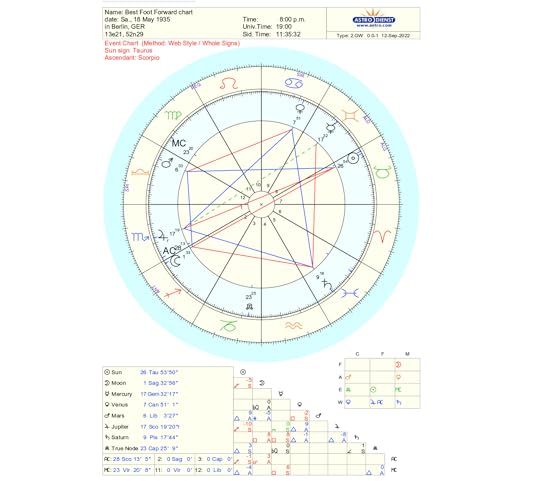 The chart on the cover
The chart on the coverFrom here, Augusta took the seven planets and set up the chart on the cover. She asked me which planets were particularly relevant. Here, I picked the ones they discuss (Jupiter, the Moon, Saturn, Mercury, and Mars, going counter-clockwise from 9pm on a clock-face.) On the ebooks, you can’t see the full cover or chart, of course! Some things are hidden.
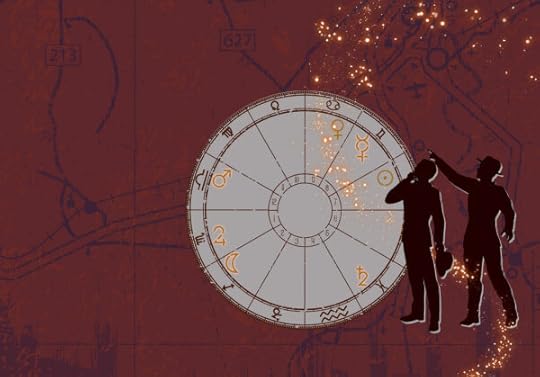 The figures
The figuresHere we have Geoffrey and Alexander, both engaged in and curious about something. I love the way they’re mirroring each other’s position here.
Nocturnal Quarry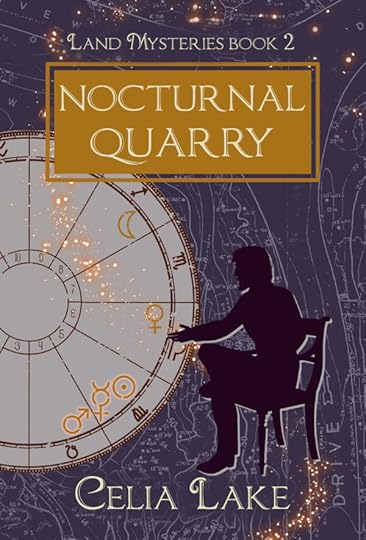 Time and place
Time and placeIn Nocturnal Quarry, Alexander is travelling up and down America’s East Coast, but a lot of the key interactions take place in New York City. That’s the map.
The chart is for August 31st, 1938, which is his conversation with Margot. When I was looking at various possible dates to see what might be amusing, I hit on this date. My conversation with Kiya included the comment “There’s a Mars/Mercury/Sun thing, which is very ‘I am going to talk to you extremely aggressively now.’ which is accurate.”
Those three planets are all almost on top of each other in the chart, a conjunction. We spaced them out here a little for legibility. The Sun is a planet in astrological terms, it’s been like that for century on century.
Also interestingWhat’s not on the cover is that Regulus, one of the ‘fixed stars’ which is associated with someone stepping into their sovereignty, and can also help battle depression, making the person so affected magnanimous, brave, civil, and even-tempered. Given Alexander’s various experiences in this book, that turns out pretty well for him.
(Fixed stars are what most people just call stars, as opposed to ‘wandering stars’ which are the planets. Again, standard terminology in the field for centuries. Fixed stars don’t appear to change places in the sky, at least not on anything like a human timeframe.)
FigureWe both loved Alexander sitting, gesturing and talking. He’s relaxed but also engaged. You can decide yourself which of the conversations in the book this is, but I often think of him talking to his aunt.
Old As The Hills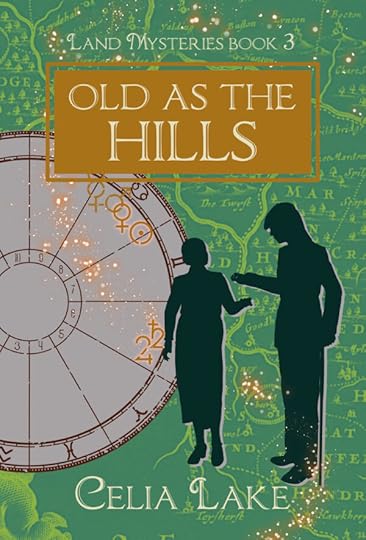
In Old As The Hills, we have two key characters again, Gabe and Rathna. They’ve been married for years, so we had a number of choices for position. We did this cover and Upon A Summer’s Day at the same time, so we knew Gabe would be on the cover of that. We also knew we wanted Gabe’s cane visible.
The first thing I love about this cover is the way they’re about to make the arch of a portal shape with their joined hands. (And knowing these two, Gabe’s contemplating something he’s just picked up, and Rathna is listening to him explain.)
Time and placeThere were a lot of possible choices of map here! The book takes places in a number of different locations. In the end, Augusta and I settled on Kent, which let her do something lovely. See that splash of golden starlight between Gabe and Rathna? That’s just about where Veritas is, their home.
The date for this one is, of course, summer solstice 1940, a key date for both of them.
Upon A Summer’s Day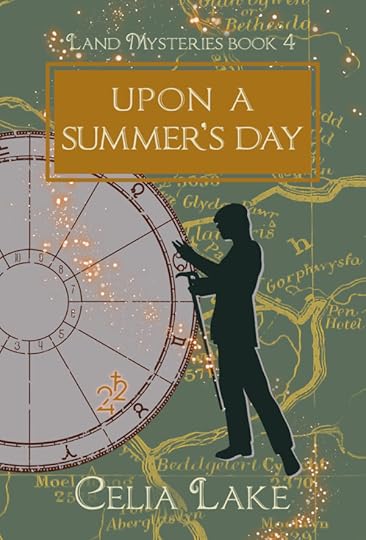
Upon A Summer’s Day actually has six point of view characters in a complex dance. (Gabe, Rathna, Alexander, Geoffrey, Richard, and Alysoun. But six is way too many people to fit on a cover. So here, we just have Gabe, gesturing and talking. I think of him here talking in the later half of the book when he is putting on a very specific educational show.
Time and placeThe time for this one was easy: November 29th, 1940. Gabe’s challenge for the Council. That also gave us our map. He’s basically standing on the location for Dinas Emrys, the Council Keep in Wales. (Dinas Emrys is a real place, so you can go compare easily here!)
Colour choicesWe went back and forth on the colour choices for this one a bit, finally settling on the two books (which form a duology within the larger series) being different shades of green. It took a little to figure out how to get them to both go together and be distinct enough.
Illusion of a Boar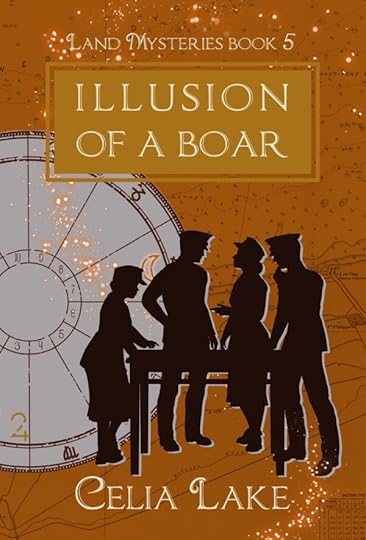
Illusion of a Boar has four point of view characters, and I absolutely wanted them all on the cover. They’re all working together on a secret project that’s key to the war effort. Here, from left to right, we have Cammie, Orion, Hypatia, and Claudio.
Augusta asked me if Hypatia and Orion should be holding hands here, and we went with them arguing. (Though after the point where Orion had figured out how to have arguments that worked better. Geeks, both of them, with passionate opinions.)
Time and placeThe time for this chart is the D-Day invasion, June 6, 1944. The location, however – and the map – isn’t Normandy. It’s Calais, where the deception operation was doing its best to focus attention.
Three Graces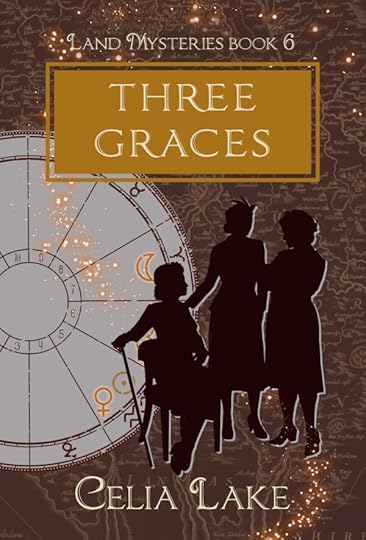
Three Graces has three point of view characters – Alysoun, Lizzie, and Thesan. As the war in Europe ends, and various of their family members are on the Continent to help as they can, they take on an old mystery. One that dates back to the Great War, in fact.
I really love how we have all three of them, talking and engaged. The way they’re standing makes it clear they trust and respect each other.
Time and placeFor this chart and map, we went back to a key moment and location. The map is of Cumbria, centred on where Hawk’s Breath is. (That’s one of the Carillon estates.) The date is February 2nd, 1922, when Temple Carillon, Geoffrey’s older brother (and the brother-in-law Lizzie never knew) died.
Choosing coloursOne trick with covers in a series is getting enough differentiation between them! In the 1920s books this isn’t too hard because the covers involve at least two colours. Here, with one main background colour (and needing the gold of the title and lettering to work), we were a lot more limited!
Here’s the image Augusta sent me when we were talking about different possibilities, so I could see the cover in different variations. Obviously, this was before she’d sorted out the figures, so we have a lot of Alexander gesturing as a model. In the end we went for the deep brown, as a nod to the land magic, and because it was hard to find a gold that went well next to Illusion of the Boar.
 The Magic of Four
The Magic of Four 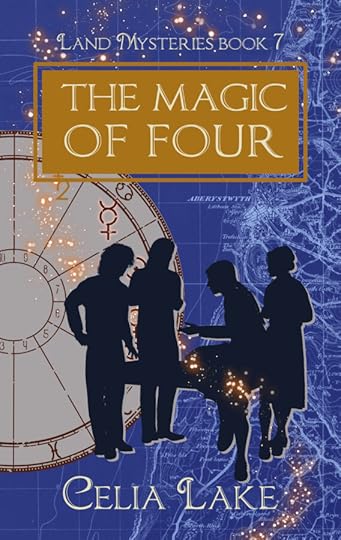
Last book! The Magic of Four is a school story, with four point of view characters. Here, Augusta’s question when she was doing the figures was “Which of them’s sitting on the table?” That’s Avigail, of course. The others are Leo, Jasper, and Ros just behind Avigail.
I knew from the beginning of planning the series that I wanted the cover to be blue. That’s both for the island location with ocean all around, and for Leo (who begins and ends the book in sequence) and the values of Bear House.
Time and placeThe map for this one was trickier, because while the island Schola is on existed historically, not on any useful maps, and it hasn’t existed for centuries or millennia. Here, we’ve got the coast of Wales, extending into Cardigan Bay. Schola is properly somewhere under the chart, then there’s more ocean.
The date is the date of the last major event of the book, June 6th, 1947, which has to do with the secret societies. I looked at the chart for their big adventure, but it had no planets that would appear on the front cover, and that’s boring.
What do you think?Let me know if you have questions through the contact form, replying to any of my newsletters, or chatting on Discord!
The post Cover design : Land Mysteries appeared first on Celia Lake.
June 26, 2024
Covers : Mysterious Arts
I absolutely adore my covers. Augusta Scarlett does a fantastic job figuring out how to come up with something that fits the genre, the historical period, and the feel of the book. Welcome to the first of three upcoming posts about our cover design, focusing on the Mysterious Arts covers.
Later this summer, we’ll have one about the Land Mysteries series. And finally, we’ll have a post about the covers for the Mysterious Fields trilogy. We’re starting with Mysterious Arts because they’re the simplest to talk about in several ways.
I’ve put the cover images in at Large size to make it easier to look at the details. Depending on your reading habits for this blog, opening them in a new tab might be easier.
Cover design in a nutshellCover design is a complicated topic, with a lot of moving parts. Complicated enough that I did an entire (public) post on Patreon about the background of what goes into cover design. I won’t repeat myself here!
Long story short, a cover has to do a lot of work to indicate what sort of book you can expect. I have made things particularly tricky because there’s not a lot of stock art for the 1920s (especially if you want anything other than flappers and gangsters, or if you want a range of body types, etc.).
Fortunately, Augusta had the brilliant idea to use a 3D modelling tool to create people, turn them into silhouettes, and then use that as the basis for the covers. It gives us a much broader range of people, clothing, and positions than we could otherwise get.
We’ve been doing this for a while, so Augusta has picked up a nice range of assets for the program like 1920s shoes. (Every so often when something goes on sale, I get an email of “Are you likely to have a character who’d wear these sometime?”)
As noted in the Patreon post, for every book I send Augusta a cover brief with information. This includes the series (which determines the layout of the cover), title, characters, colours, and symbols or other images that might be relevant. On to the specific books here!
The Mysterious Arts CoversThe Mysterious Arts series focuses on various arts and crafts. (This shouldn’t be a surprise to anyone, right?)
That meant that we wanted covers that could bring make that front and centre. In this series of covers, we’re doing that with the item inset in the top right. But it’s also about how the two characters are interacting on the cover. There’s more direct interaction in these covers than in some of the previous ones, both of them focused on some object relevant to the art form.
The other consideration here is that we wanted them to fit with the other 1920s books (The Mysterious Charm and Mysterious Powers series, at this point.) These books all have a similar layout. Two figures take up much of the cover, with the text around them. An item’s inset into one corner (right on the first and third series, left on the second). And they’re framed by a suitable period frame.
One of the things we adjust is to look at the hem lines and other clothing details (as relevant for silhouette). Obviously there’s also some character variation here.
Lynet, for example, does not have an expansive clothing budget, she’s not doing dressing to suit current fashion. (Also, there’s a war on and she has other things to think about). Charlotte, daughter of a landed estate, absolutely pays attention to the details, though in this case she’s dressed more informally. The clothing she’s in is what she was wearing on a spring afternoon.
Bound for Perdition Cover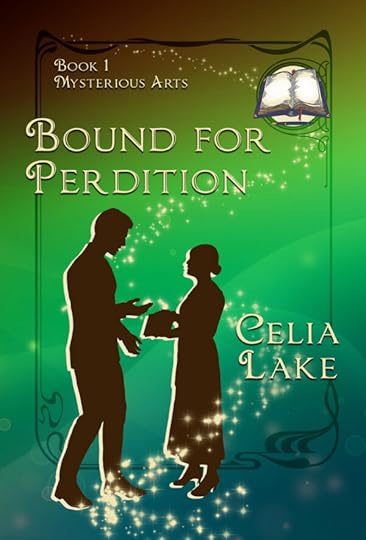
Bound for Perdition is about Lynet, a bookbinder, and the creation of Albion’s magical journals in 1917. Obviously we wanted books to feature on the cover. They’re blank, to start, which is why that book inset doesn’t have any words on it.
For colours: we wanted shades that evoked both books and the fact that one of the pieces of the plot has to do with land magic. (Or consequences for the land, in the longer-term.) That made the brown and green shades rather compelling, and the fact they shade into a slightly too bright green, the kind that makes you wonder if something’s gone a little astray. Someone’s trying too hard.
Positioning: As I mentioned above, these covers so far all have the two figures interacting directly with an object. Here, Lynet is holding a book, one of the journals. Reggie’s talking to her, trying to understand it. If you look closely, you’ll also realise that he’s not putting as much weight on his bad foot, the reason he got invalided out of the Army.
Other features: One of the ways to signal “this is a fantasy book” is to add graphic effects that look sparkly and magical. For the 1920s books, we go with a swoosh of starry goodness. It’s the same one on each book in the series, to help keep the covers looking uniform.
That’s also true with the framing. The colours change to suit the cover, but it’s the same frame on every book.
Shoemaker’s Wife Cover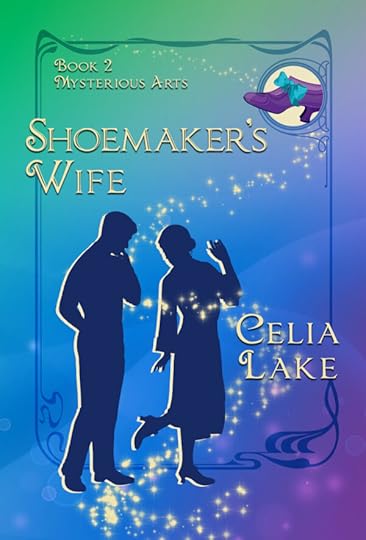
Shoemaker’s Wife is a “We got married fast during the War and now we’ve got to figure out being married” romance taking place in 1917. Owen was a shoemaker before the War, and during the book finds a job working backstage at a theatre. Clara, his wife, works in her aunt’s apothecary shop (running the shop part).
For colours: When I wrote this book, I hadn’t intended for colours to have a big role. However, that changed over the course of the book. That bright purple in the bottom right is relevant at one point, and Clara makes a point of liking highly saturated brighter shades in her clothing when she has an option.
(I know, I should have predicted the colours. I do like my colours in writing, rather a lot. People noticing colours, people talking about colour, people wearing them or choosing them.)
Positioning: Owen is a shoemaker. The title of this book comes from an old proverb, about the shoemaker’s children (or wife) going barefoot because he’s too busy doing work for other people. Here, Clara’s trying on a shoe he made.
Inset: And just as obviously, there’s a shoe in the inset, in that vibrant purple. We styled this one based on extant shoes (and the ribbon bows for lacing allowed people to change out the lacing more easily and mix up the design aspects). Having a shoe in this sort of colour is also a sign that you have other shoes for when you need something a bit more ordinary, like brown or black or navy.
Perfect Accord Cover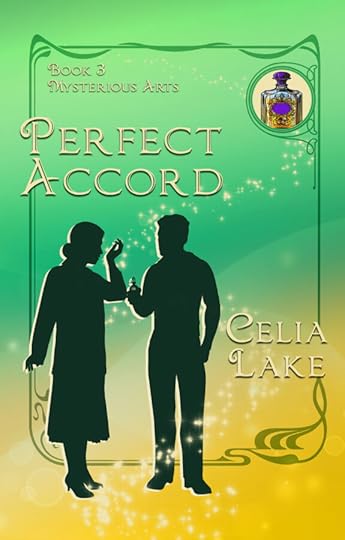
In Perfect Accord, Charlotte ends up in a remote country estate in 1923. She stumbles into where Lewis, an alchemical perfumer, is working.
For colours: This book mostly takes place in the last two weeks of April, running up to May Day. I wanted the greens here for the greening of the world that comes at that time of year in England and other similar climates.
In my notes to Augusta on this one, I said : “Open to a range here – one of the secondary characters is prone to Dramatic Red (but she should probably not get to muscle herself onto the cover). Happy plant greens (more on the muted side than Bound for Perdition) might be interesting, given the series so far (and it takes place in the fortnight before May Day) or gold.”
Positioning: We absolutely wanted to get the perfume on the cover, and this comes from a specific scene where Lewis has made something specifically for Charlotte. She’s applied it to the pulse point on her wrist and is smelling it. You can tell by how she’s holding her hand she knows how to test perfume sensibly.
Inset: The bottle on the inset is a perfume bottle, of course. It’s got purple as a node to the fact Charlotte is absolutely suited to Fox House. There’s more than a little ambitious plotting going on here, though not all of it comes out as people expected.
Facets of the Bench Cover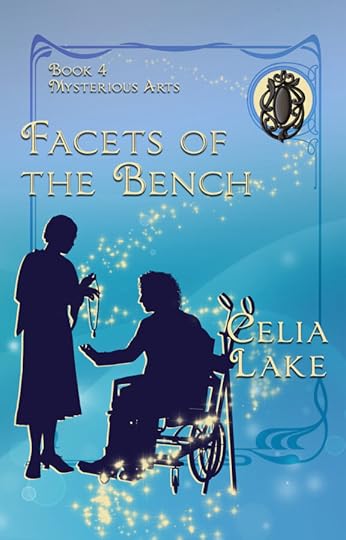
Facets of the Bench will be out in August of 2024. (So about five weeks from when this post goes public). It takes place in 1927. Griffin is an ambulatory wheelchair user, and I absolutely wanted to make that visible on the cover. Annice is a jet carver and jewellery maker.
For colours: The first half of the book or so takes place in Whitby, on the Yorkshire coast. I wanted something that would both evoke the ocean and contrast well with a jet inset, so we went with the shades of blue you see here.
Positioning: This is where our current approach really comes into its own. Augusta took an existing wheelchair asset, set up a figure for Griffin, and then figured out how to get the right sort of forearm crutches for the period into the image. (Griffin sometimes also uses canes, but I thought those would be less clear on the cover, especially at smaller sizes.)
Annice is wearing a shawl, and holding out a jet necklace for him to look at. The inset includes another jet piece, with the sort of delicate carving that makes me certain magic was used to keep it from breaking. (Jet can be fragile if dropped accidentally.)
There we go! Four covers. I’ll be back in a few weeks with the Land Mysteries covers where we took a different approach. (And where there are a number of details that aren’t obvious unless you know what to look for!)
The post Covers : Mysterious Arts appeared first on Celia Lake.
June 19, 2024
Summer reading challenges 2024
Adult summer reading programs are getting going (at least up here in the United States…) As I’ve done twice before, here’s a list of my books that fit into specific categories. If you’ve got another category, let me know! Sometimes it’s a lot easier for me to pull a list than it is for readers to figure out all the books that might fit quickly.
For example, I recently added a list of characters by age to my wiki. Easy for me to pull together, involves more math for everyone else!
You can find previous related posts at Up for a 2024 reading challenge? and Summer (any time) reading for lists from 2023. Jump down to specific kinds of bingo squares with the links here.
Author | Type of book | Colours on the cover | Title | Characters | Setting | Other
If you’re looking for a challenge, I’m drawing from items on the following lists:
The 2024 Carterhaugh School Summer Reading Challenge (that’s a public post, but more resources for patrons). The Boston Public Library 2024 bingo card (fillable PDF)The Westbrook, Maine adult reading bingo card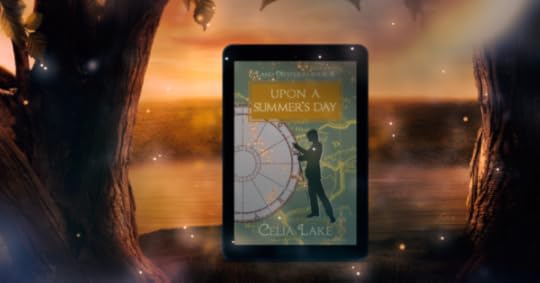 About the author
About the authorIf you’re looking for an author from New England (Massachusetts, specifically), or an author who is disabled or neurodivergent, or a female author, all my books count.
Type of bookA historical bookAll my books are historical fantasy. You can browse books by when they’re set in this handy list. Books are chronological by when they begin within each section. If you click through to the book’s page, the field that says “begins” in the section with tags and other metadata tells you when that is in more specific detail.
A novella / under 200 pages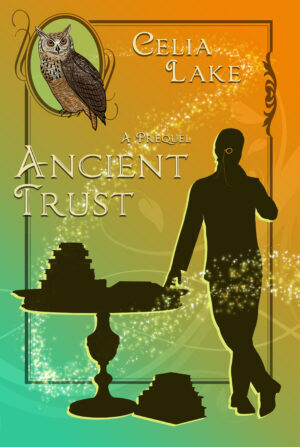 Ancient Trust
Ancient Trust
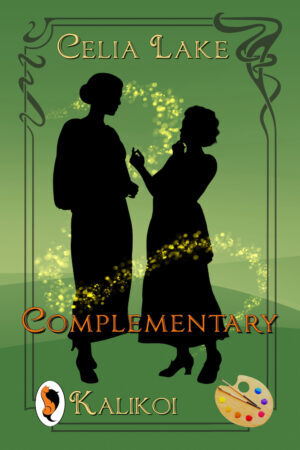 Complementary
Complementary
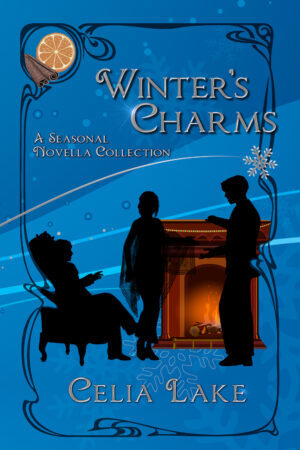 Casting Nasturtiums
Casting Nasturtiums
 Country Manners
Country Manners
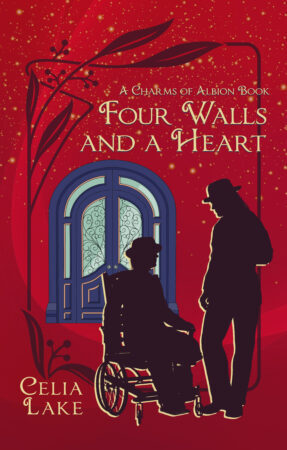 Four Walls and a Heart
Four Walls and a Heart
 Chasing LegendsA mystery
Chasing LegendsA mystery
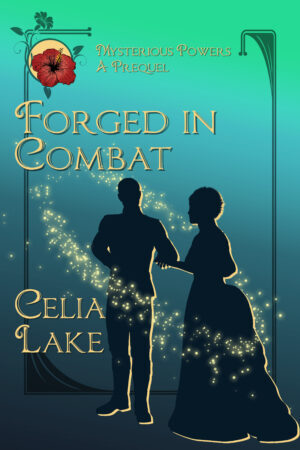 Forged in Combat
Forged in Combat
 Complementary
Complementary
 Country Manners
Country Manners
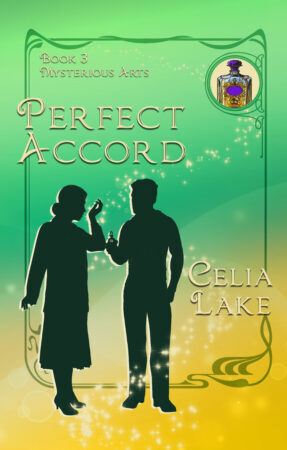 Perfect Accord
Perfect Accord
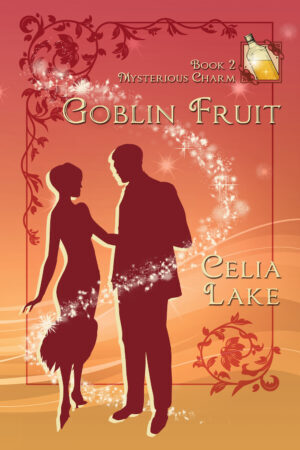 Goblin Fruit
Goblin Fruit
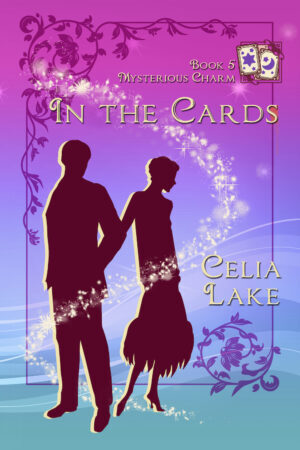 In The Cards
In The Cards
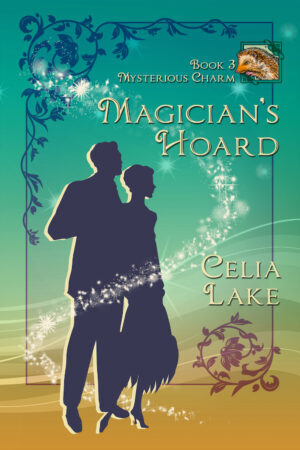 Magician's Hoard
Magician's Hoard
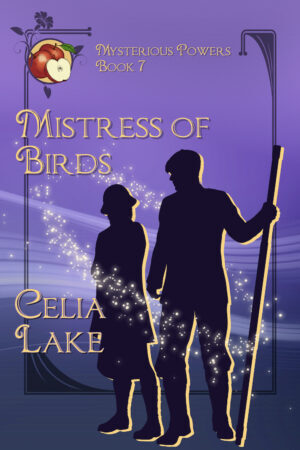 Mistress of Birds
Mistress of Birds
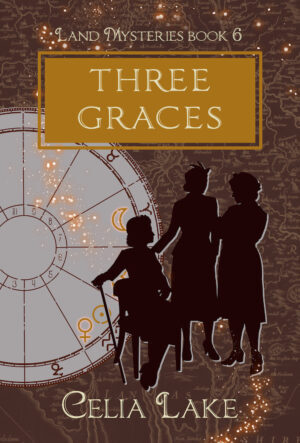 Three Graces
Three Graces
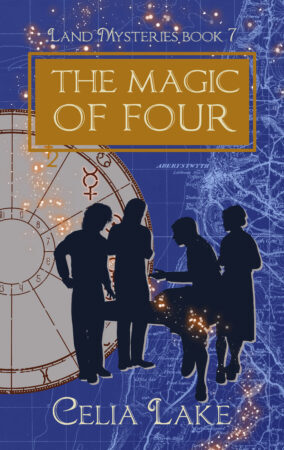 The Magic of FourColours on the cover
The Magic of FourColours on the cover(Yellow wasn’t actually on any of the lists I was looking at, but the other four colours here were, and why not make a rainbow…)
A book with a red cover Four Walls and a Heart
Four Walls and a Heart
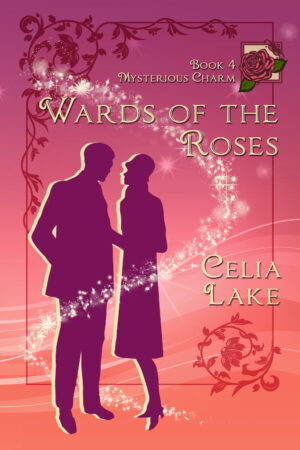 Wards of the Roses
Wards of the Roses
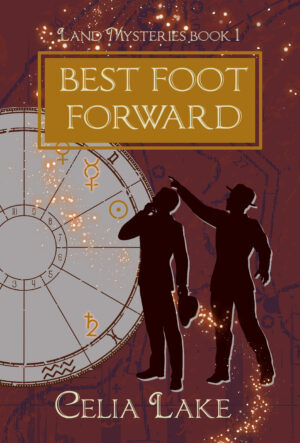 Best Foot ForwardA book with a yellow cover
Best Foot ForwardA book with a yellow cover
 Ancient Trust
Ancient Trust
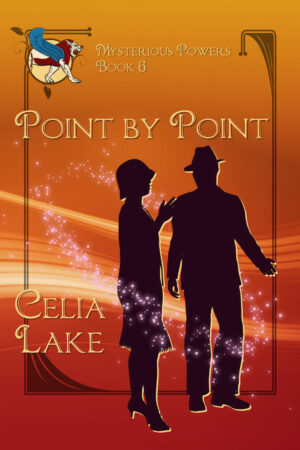 Point By Point
Point By Point
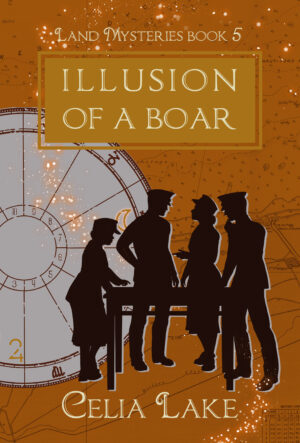 Illusion of a BoarA book with a green cover
Illusion of a BoarA book with a green cover
 Forged in Combat
Forged in Combat
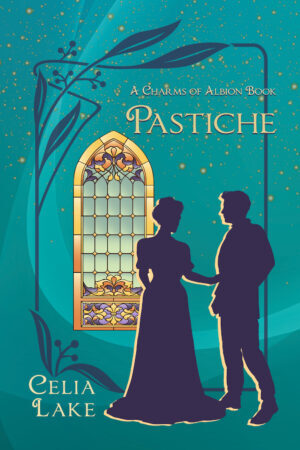 Pastiche
Pastiche
 Complementary
Complementary
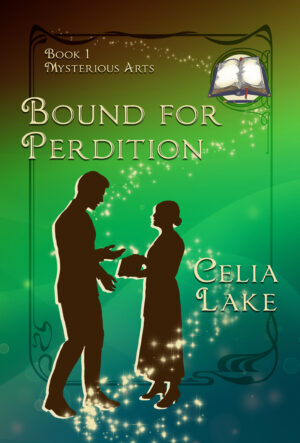 Bound for Perdition
Bound for Perdition
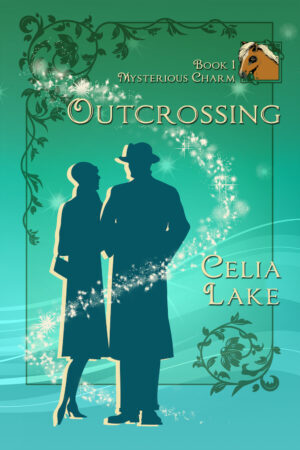 Outcrossing
Outcrossing
 Perfect Accord
Perfect Accord
 Old As The Hills
Old As The Hills
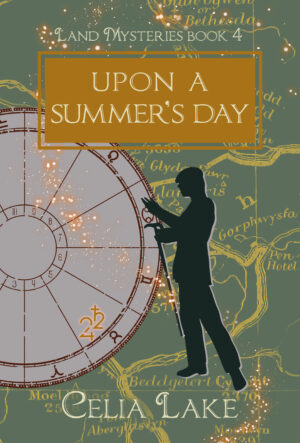 Upon A Summer's DayA book with a blue cover
Upon A Summer's DayA book with a blue cover
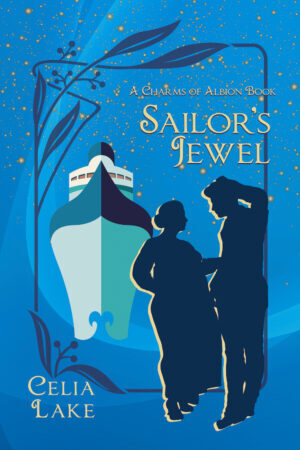 Sailor's Jewel
Sailor's Jewel
 Winter's Charms
Winter's Charms
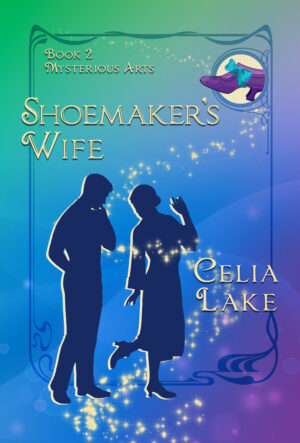 Shoemaker's WifeCOMING SOON
Shoemaker's WifeCOMING SOON
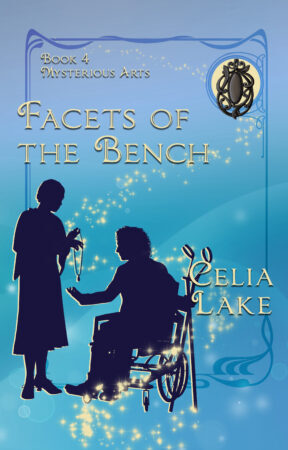 Facets of the Bench
Facets of the Bench
 The Magic of FourA book with a purple cover
The Magic of FourA book with a purple cover
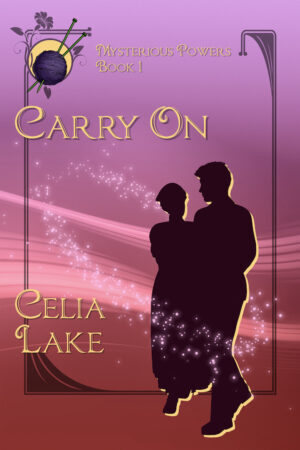 Carry On
Carry On
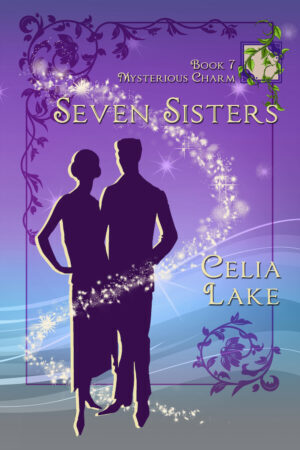 Seven Sisters
Seven Sisters
 In The Cards
In The Cards
 Mistress of Birds
Mistress of Birds
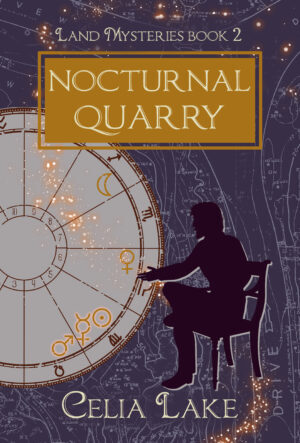 Nocturnal QuarryWords in the title
Nocturnal QuarryWords in the titleListed in the order in which they take place, for chronological tidiness.
A book with a number in the titleFour Walls and a Heart, Seven Sisters, Three Graces, and The Magic of Four.
An animal in the titleThe Hare and the Oak, Mistress of Birds, and Illusion of a Boar.
One word titlePastiche, Complementary, Outcrossing, and Eclipse.
Title starts with BBound for Perdition and Best Foot Forward.
CharactersMain character over 60 Seven Sisters : Vivian is 63 (but looks younger).The Hare and the Oak : Mabyn is 62. Best Foot Forward : Alexander is 64. Nocturnal Quarry : Alexander is 67. Upon A Summer’s Day : Alysoun is 63, Richard is 68, Alexander is 69. Three Graces : Alysoun is 67.Character who is a musicianIt’s not as obvious as in some other places Geoffrey appears, but Best Foot Forward is full of musical references, and Geoffrey plays piano and harpsichord.
Character who is a detectiveIt depends a little how we’re defining detective here, but Goblin Fruit, and any of the books dealing with the Guard or Penelopes listed below.
 Four Walls and a Heart
Four Walls and a Heart
 Pastiche
Pastiche
 Complementary
Complementary
 Wards of the Roses
Wards of the Roses
 Country Manners
Country Manners
 The Fossil Door
The Fossil Door
 Old As The Hills
Old As The Hills
 Upon A Summer's DayCreature feature / Magical creatures
Upon A Summer's DayCreature feature / Magical creaturesThe description on this one from the Carterhaugh challenge says: “Pick your poison: vampires, zombies, witches, werewolves, sea monsters, fairies, whatever floats your supernatural boat, and go nuts.” So! Picking books where it’s a significant focus, here…
Shapeshifters: Magician’s Hoard, Illusion of a BoarFatae (fae) descendants: Seven Sisters, Fool’s Gold Other fae beings: Goblin Fruit , Old As The Hills Merfolk and other sea creatures: Sailor’s Jewel SettingSet at or by the seaFour Walls and a Heart takes a holiday at Brighton and Sailor’s Jewel is an Atlantic crossing in 1901 in an ocean liner.
Set somewhere specificThere are various location options that turn up in these lists – set where you live, set in a different country, or set or some place you’d like to travel. I don’t know where you live or want to travel, but here’s some help with what’s set where:
United Kingdom: Most of my books are entirely set in the UK, obviously. You can explore different locations through the list at the top right of the sidebar on the places page on my wiki.
United States: Nocturnal Quarry takes place mostly on the East Coast of the US, including Washington, D.C., Providence, Boston, and mostly New York City. Sailor’s Jewel has a few chapters in Boston.
Europe: Magician’s Hoard and Three Graces both have a chapter or so in Paris. Best Foot Forward has several chapters in Vienna, Austria and about a third of the book in or near Berlin, Germany.
Other First in a series Outcrossing
Outcrossing
 Carry On
Carry On
 Bound for Perdition
Bound for Perdition
 Best Foot Forward
Best Foot ForwardThe post Summer reading challenges 2024 appeared first on Celia Lake.
June 12, 2024
Happy Pride! LGBTQIA+ Books
It’s June again, and that means it’s Pride Month. As you likely know if you’re reading this, most of my books are M/F romances. But more than a few of them have queer or LGBTQIA+ content and characters!
Several include demisexuality (most of my books are also slow burn). A couple have main characters who are asexual and/or aromantic. There’s an F/F romance, a M/M one, and a MMF polyamorous couple. And of course the “Enemies to it’s complicated” Best Foot Forward.
I’ve avoided big plot spoilers below. But of course there are some in talking both about people’s identities and orientations, and about which books that’s relevant in. Some additional characters can easily be read as fitting in the following categories. If they do for you, please read them that way!
I’ve a few more ideas coming! This post covers all of that. Plus it ends with a couple of recs of where to find other great queer romances.
Want a handy list of my books that are particularly LGBTQIA+?
 Four Walls and a Heart
Four Walls and a Heart
 Complementary
Complementary
 Casting Nasturtiums
Casting Nasturtiums
 The Fossil Door
The Fossil Door
 Seven Sisters
Seven Sisters
 Goblin Fruit
Goblin Fruit
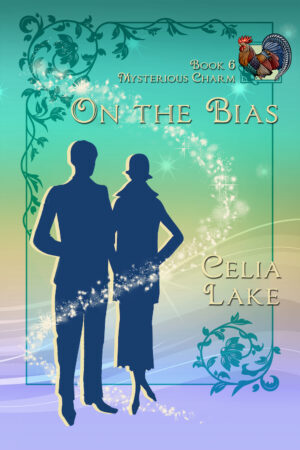 On The Bias
On The Bias
 Point By Point
Point By Point
 Best Foot Forward
Best Foot ForwardOr here’s Geoffrey, commenting on the state of his relationships and the people he loves, not always in easy to label ways.
Lesbian / Sapphic“As I keep saying, if I am lucky, he will to the end of our days. See, I am already experienced in complicated relationships that no one understands. We’ve muddled along, far better than fine, for going on twenty years now.”
Geoffrey Carillon, Best Foot Forward, chapter 41
Complementary finds Elizabeth Mason and Rosemary Ditson working together to investigate an odd bit of magic in a non-magical artist colony.
GayGil and Magni’s first appearance, in terms of writing, takes place in Pastiche. In 1906, they are a long-established couple, if very private about it. Four Walls and a Heart is their romance in 1884. It’s a cheerful little novella with Gil figuring out his life after the loss of his leg in the Sudan.
BisexualWe have a running joke that if one of my main characters is a man whose name begins with G, there is a good chance he’s bisexual. Geoffrey. Galen. Golshan. Gabe (though he’s also monogamous, it’s not terribly relevant in practise). Not Garin, though, or Gil or Giles or Griffin.
(This is not intentional, but I do think the pattern is hilarious.)
Geoffrey Carillon makes it’s clear that he’s bisexual in Goblin Fruit. But that’s the book where he both falls in love with Lizzie and they’re in the middle of a complex plot. In Best Foot Forward, Lizzie is the one to point out that Geoffrey may have fallen for someone again. (More on that below.) This book also highlights some of Geoffrey’s past relationships with men, and there’s another reference or three in Ancient Trust.
Galen and Martin are best friends – they have been since they were 13. In Point by Point, it becomes more obvious that Galen would have been interested in a romance. But Martin wasn’t, and that’s fine by both of them.
PolyamorousCasting Nasturtiums (collected in the Winter’s Charms volume) involves Seth going on a quest to find his best friend. Golshan was paralysed due to an injury toward the end of the Great War. They’ve been best friends since they were 13, but the changes in their lives mean they come to a new understanding of each other. That’s with the active approval and encouragement (and eventually participation) of Seth’s wife Dilly. MMF polyamorous triad by the end of the book.
Geoffrey and Lizzie directly discuss Geoffrey’s interest in Alexander in Best Foot Forward well before Geoffrey acts on it. Through the rest of the Land Mysteries series, it becomes clear there’s a great deal of fondness, trust, and ‘these people are family’ between the three of them.
DemisexualIt doesn’t come up directly in Gabe’s romance, The Fossil Door. But it is a bit more obvious both in some of the extras for that book (and hinted at later in his life) that he’s bisexual. In Gabe it takes the form ‘it never quite became relevant’ because he’s also strongly demisexual. It’s not until he meets and works with Rathna that he sorts out wanting to do anything about the more physical aspects of sexuality.
Thomas Benton in On The Bias is another good example. He’s over 40 when he meets Cassie. They move from cautious tolerance to mutual support to romance over the course of the book. It works in large part because she’s able to get over her assumptions about a few things. And because she’s an independent businesswoman who has her own plans in mind.
A number of other characters can be read as demisexual: a number of them need specific things to line up before they’re particularly interested in a romance or in a sexual relationship.
Aromantic and/or AsexualI wrote Seven Sisters and I’m honestly not sure if Vivian and Cadmus have ever actually had sex with each other by any particular definition of sex you care to use. They do, however enjoy each other’s company a great deal. They delight in curling up in the same bed with books, and have their own customs and patterns that make them happy. I’m certainly not going to argue with that.
Alexander, the other protagonist of Best Foot Forward, is absolutely both asexual and aromantic. He’s also been badly buffeted about by the world, without the sort of support and companionship – platonic or otherwise – that he should have had. Geoffrey, for his part, sees that hurt and isolation. He responds to it, while being cautious about checking on what Alexander will accept.
(There is no sex between them in the main novel. But there is in the included novella, Intimacies of the Seasons. Though, being the two of them, it is about ritual and the land magic as much as anything else they’re doing with their bodies. Even if Geoffrey absolutely is a hedonist if you give him any encouragement at all.)
No tidy labelI’d also be remiss if I didn’t mention the relationship between Geoffrey Carillon and Thomas Benton. It can be seen through many books but particularly Ancient Trust, Goblin Fruit, Best Foot Forward and some of the extras.
At some point between when Geoffrey and Benton meet in the trenches of the Great War and the beginning of Ancient Trust, they come to trust each other deeply, rely on each other, and twine their lives around the other’s skills and talents in a way that goes far beyond formal employment. Fortunately, that works out well for them (and their eventual partners). But as I quoted up at the beginning, Geoffrey has long experience with complicated relationships that don’t have a simple name.
Coming in the futureI do have some more queer romances coming in the future. There’ll definitely be a M/M romance out in 2026 that I’m so excited to share.
I don’t have a formal place in the writing schedule for this next one yet. But there’s a secondary character in the Mysterious Fields trilogy who is a bisexual woman. She has been very politely making it clear she would like a romance duology, please, one with each of her partners. These are going to be set in the late 1840s and mid-1850s, probably, which means a whole new era!
(She is legally married to her male partner, and she lives with both of them. Her romance with her female lover comes first, chronologically.)
There’s a chance I’ll get at least one of these two out in 2025, it depends how the writing goes. If not, almost certainly 2026.
LGBTQIA+ reads I loveI am a “pre-order and read immediately” fan of KJ Charles, who is brilliant at writing romances that are deeply historically grounded, emotionally deep, and also often hilarious and nail-biting, in suitable alternation.
Most of her books are M/M, a few are other categories, and a few (she’s great about labelling them in the blurbs) aren’t romances. My favourite rec for starting places are Proper English (F/F) and Think of England (M/M, including the F/F characters) which form a duology. But honestly, start anywhere that appeals.
For recent releases, Skye Kilaen has been putting together a fantastic newsletter highlighting queer or LGBTQIA+? romance releases. Here’s the June 2024 edition (link at the top to subscribe in email), and you can read all of the archives. I particularly love and appreciate her comments on each book that pull out highlights and make it easier to spot particular delights.
The post Happy Pride! LGBTQIA+ Books appeared first on Celia Lake.
May 29, 2024
What’s after The Land Mysteries
It’s time for a teaser of coming attractions, following on in the late 1940s after the Land Mysteries series. The second section has some spoilers for Illusion of a Boar.
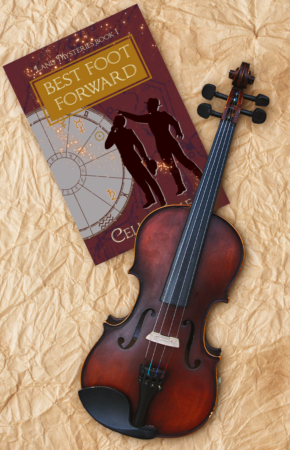 The Land Mysteries
The Land MysteriesFor a good while – several years – I was convinced I wasn’t going to write anything after the first half of 1929. I wasn’t as interested in writing the 1930s (especially the heart of the global Great Depression), and I also wasn’t sure about getting deeper into writing the Second World War.
And then I wrote Eclipse. Kiya left a marginal comment about wanting to see Geoffrey Carillon and Alexander Landry team up to take on munitions dealers. Every single one of my early readers commented on that idea and also wanted to see it. I gave in to the inevitable. As you do.
It took some more thinking, though. I didn’t want to do just one book, hanging out there at that chronological range. It felt unbalanced. So that meant thinking about what else I could write that was interesting in the Second World War.
One of the things I realised early on is that as much as I wanted to write more romances, that it’s tricky to write romances actually during a war. (Not impossible, as the series proves, but it probably wouldn’t sustain a whole series sensibly). Getting people in the right place for long enough is tricky!
But I also wanted to explore the other kinds of relationships people have in their lives. Sometimes that’s family. (Sometimes that’s enemies to “it’s complicated” to family.) Other times it’s about mentorship. Sometimes it’s about professional commitments or goals that emerge and need doing. Sometimes it’s about chosen siblings and friendship.
What that meant for the Land MysteriesSo the Land Mysteries series turned into a series that has two romances in it.
Those are Best Foot Forward and Illusion of a Boar. It has a book focused on mentoring and apprenticeship – Old As The Hills, where both Rathna and Gabe have apprentices who are key to events as they unfold. There’s one about the networks of people we find and choose. That’s Upon A Summer’s Day, Gabe’s particular answer to a question, but where Rathna, Alysoun, Richard, Geoffrey, and Alexander also point of view characters.
Also, I did some math, and realised that I could write about Gabe Edgarton as an older adult. His romance in The Fossil Door takes place quite early in Gabe’s adult life (he’s 22). The idea of writing him at the height of his powers, at about 40, strongly appealed. And the idea of writing what his marriage to Rathna is like, when they are still passionately in love with each other, but separated by different challenges, also appealed.
The series also has two character-focused novellas. Nocturnal Quarry is about Alexander as he navigates having more people who have his back. And there’s Three Graces, where three women take on an old mystery.
And finally there’s The Magic of Four, which absolutely isn’t a romance, they’re all fourteen. It’s a school story, in the grand tradition of school stories, about four kids who are trying to figure out how they fit into the world, and what that means for their friendships. But it’s also got a fair bit about siblings (especially Leo and Ursula or Jasper and Stan)
But also, some romances(This is where I’m talking about some spoilers. Last chance to opt out.)
Illusion of a Boar has a romance, but it has four point of view characters. When we start the book, one of them is married, in a distant and unsatisfying marriage (Claudio). One is in a relationship with an RAF pilot. She’s living with the unspoken knowledge of the chances he’ll die before the end of the war, and unable to think about a future with him until some things shift. And we have two people who are single, one of whom has just had a horrific betrayal and divorce in the six months before the book begins.
At the end of the book, those last two have figured some things out. And that leaves Claudio. We’ll come back to Claudio.
But I also had a couple of people who were old enough to be thinking about adult, long-term relationships. When I mapped out the children of various of my extant couples from the 1920s, several of their children are in their early 20s by the late 1940s.
Moving on from the WarUrsula’s romanceThis one takes place in the middle of 1947 (so just as The Magic of Four ends).
Ursula Fortier (Leo’s older sister, daughter of Thesan and Isembard) grew up at Schola like her brother. But she was born to be in Fox House. She combines all her father’s native charm and social grace and her mother’s ability to make sense of patterns. (As Thesan keeps saying, astronomy is in large part the art and science of figuring out what’s there by what you can’t actually see.)
Ursula is a terrifying delight. She wants to be heir to the land magic much more than either her father or brother do. And in the summer of 1946, she leaves school and promptly moves into the landed estate at Arundel with her Uncle Garin. She’s got plenty to keep her busy. She needs to convince Uncle Garin to formally name her as his Heir. She’s got a whole apprenticeship in Incantation magic to do. And there’s this secret society to impress.
When she meets someone on the road near Arundel in the summer of 1947, she has no idea what that’s going to change. But being Ursula, she certainly has some ideas as soon as she gets a little more information.
I’m writing this one starting in August 2024, and it should be out in May 2025.
Edmund’s romanceThis is probably 1948, but I need to poke at some further research to pin down the date.
Edmund is the eldest child, son, and Heir of Geoffrey and Lizzie Carillon. He finished at Schola in 1944, and was immediately snatched up to assist in Intelligence work by Lap Manse, who had long been his father’s intelligence handler. (And since their marriage, also his mother’s.) Lap’s delighted to have someone who has a good range of language skills, intelligence, and the ability to understand when to keep his mouth shut.
Edmund continues with the Intelligence work through the end of the War and a bit beyond, wrapping up in the summer of 1946 in order to go up to Oxford. His father, Geoffrey, read History. Edmund’s reading Classics. And, of course, keeping up a full schedule of magical training at Oxford’s Academy, including apprenticing with his Uncle Alexander in both Ritual and Naming magic. He’s also got to keep up the proper seeming of a young lordling of excellent family at university.
It’s the last one that annoys more than a handful of people around him, and that’s where his romance comes in. She’s fought hard for a place at university, she has everything to prove – and she has some secrets of her own about her war work.
I’m writing this one starting in February 2025, hopefully out in November 2025.
Claudio’s romanceIn the As The Ground Shifts extra, Claudio has ended up as apprentice to Gabe Edgarton as a Penelope, much to his mother’s annoyance. He turns out to not only love the work but to be tremendously good at it. Where Gabe – and a number of the other Penelopes – excel at specific skills, Claudio goes at it differently. He’s rarely the best person in the room at any given skill, but he’s reliably in the top couple in everything, able to draw on different knowledge and magical knacks to solve problems.
(Unlike a lot of Penelopes, he also doesn’t find rote and necessary meetings with the Ministry tedious. And he remembers to reorder materia before he runs out and turns in his paperwork on time without seven reminders.)
But his personal life has, frankly, never been terribly good. Married very young, with a son born the year he turned 21, Claudio has been in the shadow of his parents all his life. More than that, their expectations continue to weigh him down. In late 1945, Gabe called him on the state of his marriage. (That’s in the last sections of As The Ground Shifts). It’s clear changes need to be made.
By 1950, he’s arranged a civil divorce. At 41, he’s been figuring out how to build a more meaningful relationship with his son – and he’s trying to figure it out with his daughter. He’s given up much hope of anything like a romance, as much as he’s happy for his friends who are still very much in love. The rest of his life is much better.
Only he keeps going at questions from an angle no one else – even Gabe – seems to be considering. And he certainly doesn’t expect what happens when he meets someone who could just become an actual partner, prodding Claudio to take a tremendous risk, but to do it his way. Certainly not the way his mother would approve of.
I’m writing this one in August of 2025, and it’ll be out in May of 2026 if all goes well.
So, you can see all of that’s going to keep me incredibly busy. Between those, I’ll be working on more books in the 1920s Mysterious Arts series. Farran Michaels (seen in Seven Sisters) gets his romance (that one’s spending a lot of time in London). And Gemma Smythe-Clive will too. (She makes an appearance as an adult in The Hare and the Oak.) Those should be out in August 2025 and February 2026, respectively.
The post What’s after The Land Mysteries appeared first on Celia Lake.
May 15, 2024
Idea to Book: The Magic of Four
Welcome to our Idea to Book post for The Magic of Four, which just came out at the beginning of May. (This means that from now I’ll add a new Idea to Book post a few weeks after the book comes out. But you won’t have a long string of them.)
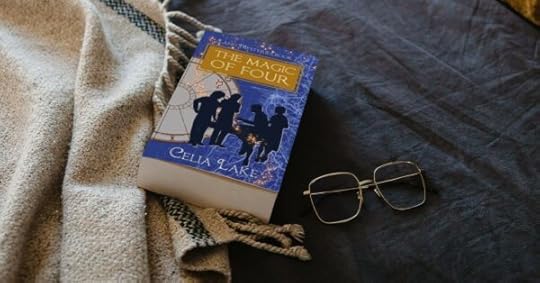
The Magic of Four is also the last book in the Land Mysteries series, which explores three themes during the Second World War. Those are a range of different kinds of relationships in our lives. It’s also about the land magic, and how Albion responds to the Second World War. You can see all three of those here, in various ways.
The Magic of Four has everything you might hope for in a school story. There are snippets of classes, finding friends, dealing with student problems. And of course, because it’s Schola, it’s got magical sports (pavo and a dash of bohort), secret societies, and all the implications of a magical school.
As I’ve noted, I do have plans for three romances. Ursula Fortier (Leo’s older sister) will have hers in 1947, Edmund Carillon (Ros’s older brother) in 1948, and Claudio Warren (in his 40s, and close to both Leo and Avigail) in 1950. Those will let me tie up some loose threads on other ongoing questions about the land magic, living in post-war Albion, and the Council.
School storiesI’ve been wanting to write a school story since before I published Eclipse. That’s the staffroom friends-to-lovers romance of Leo’s parents over the 1924-1925 school year. And nearly as soon as it came out, I heard from readers hoping wistfully for a school story at Schola at some point.
Hopping genres that way is a little tricky. But when I started thinking about the Land Mysteries series having a larger arc, it got easier. In a series that’s talking about a wide range of relationships in our lives, finishing with the next generation seemed like a really interesting angle on the end of the war.
Growing up reading themI grew up on school stories, long before they were widely available in the US. My father was English and my mother grew up in the UK. My father was a professor. Every year between the end of classes and Christmas, he’d spend a week in London and visiting friends. He’d come back with a selection of books – and I’d send him with specific ones I wanted. I read through all of the Enid Blyton Malory Towers and St. Clare’s books until they started falling apart. And many of the Chalet School books. They definitely imprinted the shape of a school story on my brain.
(If you’re not familiar with the Chalet School series, they began in the 1920s, with a school set in the Austrian Tyrol. It was run by teachers and near a tuberculosis sanitarium. As the Second World War began, the books deal with the school – and various members – escaping through the Alps. They then established the school in new locations in the UK. There were dozens of books, and I’ve read about half at some point in my life.)
And like many people, I can’t deny that Harry Potter is an influence on my brain. Besides the above exposure to British school story traditions, I was part of a seven-year fannish alternate universe project based in the Potterverse. (It ran from 2007 to 2015, before more recent events).
Contemplating the structureOne of the things that pointed out is how impossible the classroom schedules are when you think about seven years of students. Because of that, one of the first things I did when I decided to write the Albion books was to sit down and figure out the teaching schedules for Schola. And then figure out how many people needed to be teaching there to make the schedules work. Or what that meant for the overall size of the population.
That project also meant I had a whole lot in my head about how a sensibly designed magical education might be structured. (I spent a decade working in an independent day school as a librarian. That was after two years in boarding school as a student. I have a lot of opinions here.)
One of the things I knew I wanted to integrate fully were the idea of House magics that weren’t just superficial flavours to the Houses. And the idea of magical secret societies where the rituals had significant and meaningful weight for most (if not all) members.
Schola and her magicOf course, Schola has her own magic. Leo gets introduced to a piece of it over the holidays in his first year. (The relevant scene is coming in July for folks on my Patreon. And for everyone in due course.) That bit of magic is one of many things his parents discovered during Chasing Legends. That takes place back in 1926 along with Pross and Ibis.
Schola is ancient. The school was founded in its earliest form around 600CE, and in something closer to the form of a school before 1066. The current keep dates from 1100 or so. There’s so much history and magic there, much of it built up over time. And not all of it is terribly well documented.
But of course, there are also the specific magics. There’s the salle, and all the protections. There are the baths under the school. Each house obviously also has bathing facilities, but for magical reasons, sometimes you want a ritual bath. Or it’s the best solution after a hard duel or long bohort match.
There’s so much about Schola I haven’t had a chance to spend time with. We’ll see if I get there in any future books. And I’ve had a number of requests for the other schools, especially Alethorpe. I need a plot and characters to go with that, but I’m definitely looking for a way to explore there, too!
Children of existing charactersOne of the thing I had a lot of fun with in The Magic of Four is playing with the generations. All four main characters here are the children of people in previous romances.
Leo’s the son of Thesan and Isembard (Eclipse is their romance.)
Ros is the daughter of Lizzie and Geoffrey (Goblin Fruit is their romance, Best Foot Forward explains the presence of Uncle Alexander.)
Jasper is the son of Rufus and Ferry (Outcrossing).
And Avigail is the daughter of Gabe and Rathna (Their romance is The Fossil Door. You can see a younger Avigail in Old As The Hills. Gabe’s parents appear in a number of places, including Pastiche, their romance)
We get glimpses of their siblings in various ways, sometimes directly on the page. Artemis and Theo Lefton are the children of Kate and Giles Lefton (Wards of the Roses). There are mentions of the Wain cousins (the children of Seth, Dilly, and Golshan, Casting Nasturtiums), and so on.
I’ve found I really love playing with the generational implications. All four sets of parents here are in fact trying really hard to be good parents. Some of them had good parents (Thesan. Also Gabe, whose parents don’t always understand him, but worked to support him).
Some had distant parents (Isembard, Ferry). Some lost their parents too young (Rathna, Rufus). Some aren’t parenting the way they were raised (Lizzie and Geoffrey).
It makes for an interesting mix when they deliberately do something different.
And a cameoFinally, there’s a particular cameo in this book that I knew I was going to do as soon as I realised Jasper would be a main character. I was a fairly serious horseback rider in my teens, and Jasper’s Dot is based on my beloved Dorothy.
This is Dot (and me) in about 1987. I was 12, and she was also about that age. I’d had her for under a year at that point.
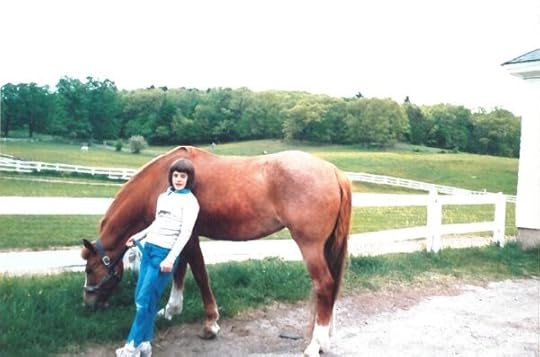
She was pretty much as described in the book in terms of appearance. Think of a draught horse scaled down to just at the top of pony height. (That’s 14.2 hands, or just under 57″ at the withers). She indeed had feet like platters, her tail was a glorious mix of every colour, and she was terribly smart. Also wonderfully smart, it depended on the day. My Dot was not quite the escape artist that Jasper’s is, but there were times it came close.
(Dot’s terror of sheep-shaped objects was true in real life, though. I never did figure out why.)
PavoPavo, as a sport, is drawn in part from my experience doing Pony Club Games in my teens. Those games are played by teams, with different goals that require you to vault, weave through obstacles, move items from one place to another, and more. I was on one of the top Games teams in the country one year, which was quite an experience! (Not on Dot. Dot was way too round to vault on.)
But she’d have adored pavo, the way the fictional Dot does. She hated anything that got rote or routine, she adored new puzzles. We did very well at trail classes. In these, you have to solve a series of tasks, and are judged on whether you do them, and then on speed. They involve things like opening gates from horseback, backing through a pattern, moving a rattling plastic bag full of leaves a few feet away.
One of the things I loved about Dot was that she knew when something counted. Every time I did anything in that last pavo game chapter (writing, editing, whatever), I found myself crying. Every bit of that desire to do the thing, and to do it right was Dot to the core.
The post Idea to Book: The Magic of Four appeared first on Celia Lake.
May 8, 2024
In Character: Thomas Benton
It was hard to choose who would be up second in this series of In Character posts focusing on particular individuals in my books. Thomas Benton is often in the background, but I love his steadiness, his loyalty, and his competence.
Benton is a point of view character in Ancient Trust (a prequel novella in 1922) and his own romance, On The Bias, in 1926. The best way to find all the books with Benton somewhere in the picture are the books about the Carillon family. (You can find that list at the end of this post, for convenience.)
 The beginning of Thomas Benton
The beginning of Thomas BentonThomas Benton began his working life early. As is true of many people in Albion when he was young, he apprenticed around the age of 13. In Albion, that includes continuing education in the academic basics, but also a great deal of service and hard work. He began as a hallboy, one of the classic starting roles in service in the period. That involved everything from running needed materials up and down stairs for other servants to polishing the boots.
Benton is – as becomes obvious in the books that include him – autistic. Working in a great house could have a lot of challenges (and be rather awful, depending on who was in charge). One thing it had going for it was clear expectations. For servants of the period, everything was laid out. That included work duties and how you did them. But there were also specific, enumerated, expectations about where you sat at meals. Also who you talked to among the other staff, and what appropriate activities for your days off were.
Benton mentions he was in service with an aristocratic family in Kent. (That’s obviously not the Edgartons, but he never names who they were.) They treated him well, and he rose up the ranks to become a footman. Unlike some households, they don’t seem to have chosen their footmen primarily for height or looks. Even before his nose was broken, Benton was not particularly handsome in that way.
Coming into Carillon’s orbitBenton was well-established when the Great War began. He was 36, he’d settled into a stable position. Men in that kind of servant role didn’t marry, but he wasn’t much interested in that. He knew his work, he knew how to handle the estate, and nothing much was going to change.
Except then it did. And it changed rather more when he was assigned as Geoffrey Carillon’s batman or soldier-servant. These men essentially took on the role of a valet for a serving officer, including in the trenches. A batman would convey orders from the officer to their subordinates, make sure the uniform was tended, take on various tasks to free up time for the officer to do other duties. They’d often act as a driver or bodyguard, including in combat conditions. It was quite common for them to continue in the officer’s service once the War ended. (See also Lord Peter Wimsey and Bunter in the Dorothy L. Sayers books.)
Much like Wimsey, Carillon is eventually pulled out of the trenches for Intelligence work. (In Carillon’s case, it’s thanks to his old university friend, Lap Manse.) He brings Benton with him, and (in later books) make it clear that he trained Benton up magically in the skills Carillon needed. In 1917, Carillon is badly injured (saving Benton’s life, it turns out). Benton shepherds him home and tends him at Ytene, saving
After the WarOnce the War ended, Carillon was restless. He’s unable to stay in Albion comfortably. The two set off on a series of expeditions. They don’t outline all of these. Mentions make it clear that they’re partly about making connections for magical materia – plants, stones, and other items of use. But they’re also partly Intelligence missions. They either have a direct goal or with an aim of establishing relationships in particular places. It’s while they’re on a trip across Kenya that Carillon’s older brother dies and they have to return promptly to Albion. (The tale of what happens then is in Ancient Trust.)
At that point, Benton’s work becomes focused on tending to Lord Carillon’s needs, running his household, and adapting to the changes. It’s a rather unconventional household. Normally there would be a butler, as well as a housekeeper. But Carillon refuses to consider that and create tensions for Benton. Once Carillon and Lizzie have solid plans to marry, Carillon sets things up to have Benton move into a role as estate steward. And he finds a new valet.
Learning new skillsHowever, there are also hints through the books about Benton’s skills. Carillon realised fairly early that Benton might not have had much formal magical training. However, Benton was able to pick up a number of knacks quickly. Besides the ones useful in combat and domestic life, they include investigation (such as the way Benton assists in On The Bias).
Later on, Geoffrey talks about some of that. Here’s a snippet of an extra that isn’t published yet. (Watch the newsletter!) It takes place after a particular chapter in the arena at Ytene in Upon A Summer’s Day. (This section avoids direct spoilers about what happened.)
Benton’s Romance“Two, actually.” Alexander leaned forward. “You said Benton helped you keep the place up, but you’re in better practice than I’d have thought.”
“Also Benton, who has known my secrets longer than either you or Lizzie. And while my domina is indeed many things, she is not that sort of fighter, and I am exceedingly glad she has never had to be. Though don’t get between her and a badly planned project.” Geoffrey waved a hand. “Benton and I aim for a bout at least once a week. We avoid certain classes of magic, but other than that…” He shrugged his good shoulder. “Good for both of us, honestly. He came to the art late, but on the other hand, he’s never been spoiled by bad training. I taught him enough to back me up, originally, and then he picked up more and more on the fly.”
Alexander cocked his head. “Do you think it’s a pity he didn’t have a chance at Schola, then?”
“Oh, perish the thought. Schola would have twisted all that in him. Not everyone, of course, and especially not now, with more sensible heads in place.” Geoffrey tipped his glass.
“Well, certainly ones more inclined to agree with our priorities, yes.” Alexander agreed. “But the rest of it?”
“Benton likes his structures. And Schola would have given him some of that, but they’d have made him rigid, protecting himself, making the most of things. Where instead, I got him when he was a grown man, who knew how to learn the next thing he needed for the position he wanted. And they’d given him a good solid education, both practical and in terms of history and literature. The sort of thing read out in the servant’s hall while people were doing tasks with their hands, you know.”
Extra, Alexander and Geoffrey talking after chapter 11 of Upon A Summer’s Day
This overlaps with Benton’s own romance, which takes him by surprise. He begins On The Bias in an antagonistic relationship with Cassie. She’s the dressmaker Lord Carillon prefers for clothing for his wife-to-be. Benton has been tasked with picking up several new frocks. He is – of course – inspecting them to make sure they are as ordered. Nile green was a particularly fashionable shade that season.
Benton waited until she took a step back, to the side of the table, then he glanced at the invoice. “Day dress, Nile green, pearls, cream lace.” He peered, found the proper box, and considered. “This is not Nile green.”
Cassie blinked, momentarily uncertain. The dress was a pleasant yellow-green, a colour that not many people could wear well, but it would suit Miss Penhallow’s blonde hair and fair skin in certain settings. With a cream shift, and a matching cream shawl and hat, the colour would stand out more, vivid and bright for the summer.
“The Nile is not this colour. The Nile is never this colour. This is the colour of poor-quality overdyed jade.” He frowned for a moment. “Or possibly a muted arsenic green. We are having none of that.” His voice was firm, unyielding, but not quite on the boundary with rude.
Chapter 2, On The Bias
However, when Cassie brings some worrying gossip about Lord Carillon to him, they have to cooperate to figure out what’s going on. And sort out whether there is actually anything of concern there. By the time matters come to a head during a house party at the Carillon estate in Cumbria, he and Cassie have come to trust each other. They both feel a good bit more than friendship.
They do not have their own children, but Cassie continues to take on and nurture apprentices. Benton both mentors a number of people attached to Ytene, and also mentors junior servants. By the time Lizzie is helping with an old and aching mystery in Three Graces, she can get quite a bit of useful information via Benton and his connections.
Thomas Benton’s later lifeIn the Land Mysteries books, we see Benton comfortably settled into his maturity. In Best Foot Forward, he is a trifle put out not to be accompanying his lordship on a spot of espionage. But as Geoffrey says, Benton is not good at that sort of subterfuge in close quarters.
When Geoffrey brings Alexander back to Ytene, however, he is looking to Benton for his evaluation. Geoffrey is not giving him a veto, exactly, but if Benton had a serious concern, that would matter. Benton, for his part, is dubious at first, but eventually comes to the conclusion that whatever else Alexander is, his presence is good for both his lordship and her ladyship.
Later, Benton is one of the four who make up a working party in the immediate aftermath of the end of the war in Europe in the summer of 1945. Alexander, Geoffrey, Benton – and Isembard, after the end of the school year – are focused on getting some dangerous magical locations safe enough for long-term resolution. It’s tricky and dangerous work, requiring a high level of skill and trust. Benton’s presence – and his visible acceptance in that role by Alexander and Isembard – certainly indicates that they respect his abilities.
Finally, in The Magic of Four, we get a glimpse of Benton’s mentoring. Here, he provides a little prod to Jasper during the winter holidays, as well as making sure to spell out something that Jasper needs to hear. In that chapter – Jasper’s point of view – it’s obvious how much Jasper respects Benton’s role as a foundation of the estate.
The CarillonsAs I noted above, you can find Benton all through the books dealing with the Carillon family. Here’s the complete list:
 Bound for Perdition
Bound for Perdition
 Ancient Trust
Ancient Trust
 Goblin Fruit
Goblin Fruit
 On The Bias
On The Bias
 Best Foot Forward
Best Foot Forward
 Nocturnal Quarry
Nocturnal Quarry
 Upon A Summer's Day
Upon A Summer's Day
 Three Graces
Three Graces
 The Magic of Four
The Magic of FourThe post In Character: Thomas Benton appeared first on Celia Lake.
May 1, 2024
Idea to Book : Perfect Accord
With this Idea to Book for Perfect Accord, we’re caught up to the current releases (well, until Friday, when The Magic of Four is out). We’ll have that idea to book post in a couple of weeks.
Perfect Accord exists because as much as I adore Gabe, his sister is also fascinating. They’re both very much children of Alysoun and Richard – with that particular combination of intelligence, observation, and practicality. But they get there in distinct ways. More about that under Charlotte’s story.
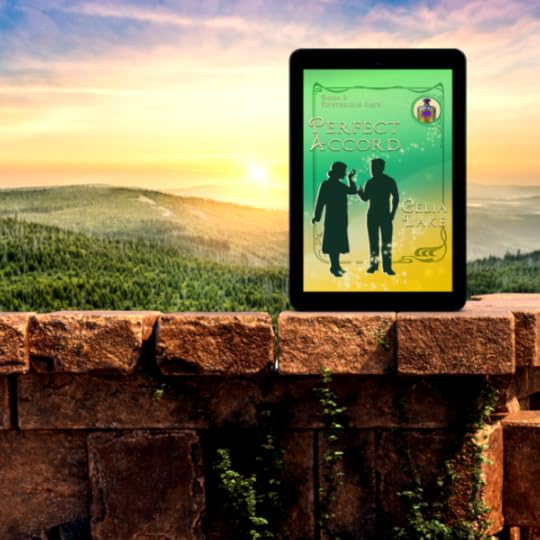 Alchemical perfumes
Alchemical perfumesWhen I started drafting ideas for the Mysterious Arts series – which crafts and arts I wanted to write a book about – perfume was high on the list. I’ve been fascinated by natural perfume techniques for a long time. (Roughly around when a friend introduced me to Black Phoenix Alchemy Lab around when I finished college. Though I was aware of some of it a little earlier than that.)
And I was sure that alchemical perfume – where scent and magic combine for various effects – would be a wonderful way to spend some time with the concept.
Perfume historyIt turns out that the 1920s are also at an interesting point in perfume history. Various of the artificial scents were developed started in the late 1800s. One of the challenges of natural perfumes is that they’re a lot more prone to interact with a particular person’s skin chemistry. One person might ‘amp’ (as modern terminology has it) a particular perfume note. That same note on someone else turns to the scent of baby powder, dishwashing liquid, or something else that wasn’t what was intended!
(And just to complicate things, people’s reactions to perfumes – or the perfume reaction to a person – can change with various things. That can be something that’s reasonably obvious, like medication or diet changes. But there are also plenty of people who report changes after a major relationship change or other change in their life.
Another of the challenges is where you get the materials from. Some natural perfumes come from flower petals. (Usually vast numbers of them, to get a small amount of highly scented and distilled oil). Others come from animal sources historically – civet, ambergris, and musk, for example. Some come from plants that grow widely and easily. Others come from sources that are endangered, difficult to cultivate, or extremely picky about conditions. These days, most of those are what are called “accords”, a blend of other scents to achieve the same effect.
Charlotte’s storyI love all the Edgartons (well, except Richard’s mother). But as I said above, while Charlotte and Gabe share a number of things, the way the insides of their heads work are quite different. Charlotte is, of course, used to her brother’s quirks, and accommodates for them, fairly easily. (Which means that when she meets Lewis and he has different but equally distinct preferences, she finds it easy to adjust, considering the circumstances.)
But they’re different in some key ways. Where Gabe was fundamentally preparing for an adult life as a Penelope from the time he was nine, eleven, certainly thirteen, Charlotte still isn’t entirely sure what to do with herself. When Perfect Accord opens, she has a plan that’s fine. Maybe not excellent, but she knows how to do what’s expected of her or she’s learning it. (Like some of the details of estate management.)
Where I startedWhen I got to writing Perfect Accord, I knew parts of Charlotte’s story. She’d been a point of view character in one of the extras for The Fossil Door. But then, more recently, I’d written her as an adult in Old As The Hills and Upon A Summer’s Day. (Though she is not a point of view character there, her personality and priorities definitely come through.) I also knew that whoever it was she was with during The Fossil Door wasn’t who she actually married. So in many ways I was reverse engineering her romance from who she became because of it.
The thing about Lewis is that he’s brilliant. And while he’s a great deal more practical than some brilliant people, there’s a lot he knows he’s not skilled at. Dealing with people, for example, especially with a bit of good business sense. He doesn’t trust that connections or supports are going to be stable. And he won’t take risks that might hurt his family. (Well, especially his brothers.)
The question of cultsAs I mention in the author’s notes for Perfect Accord, I’ve been intrigued by the draw of cults for a long time. There’s a fascinating question of what encourages people to commit to them in the first place. (People often have a good reason for that!) And then there’s the question of how to get free, or how to recognise there’s a problem.
Having Charlotte as a key point of view here was a great deal of fun. She’s suspicious from the start – given her family, and given that what’s on offer isn’t that interesting to her. But she’s playing along because she is worried about Victor. He’s a lot more interesting as a target for them (money, magic, influence in new places…)
Figuring out what a cult might look like in the 1920s in Albion was a fun challenge. The focal point for cults does change in response to society around it. Albion’s decentralisation of Christianity means that ‘how do we recover from the horrors of the Great War’ has a different flavour. Leaning into the Arthurian makes a great deal of sense. On the other hand, I couldn’t resist a lot of terribly awful Arthuriana, all muddled and confused. I am delighted by the number of readers who’ve appreciated my entirely ahistorical clothing and nods to certain odd bits of the legends.
Sometimes people aren’t good for each otherThe last thing I thought about a lot in this book is that sometimes people aren’t good for each other. Charlotte and Victor have a long history together. But for all they care about each other, that doesn’t mean they’re good for one another. Charlotte has learned to avoid pushing Victor – about things where some resistance would be good for him. She doesn’t like dealing with his pouting.
And Victor hasn’t figured out what he wants out of life, or how to get it in a way that doesn’t drag people along in his wake. I do think that a trip to America, away from Albion’s expectations and set pieces will do him a lot of good. (And if you haven’t checked out the extra for this book, it does fill in some gaps. Specifically, Charlotte and Victor sorting out their very different experiences in Somerset and the wounds it has left.) It’s possible to love someone and know you shouldn’t be alone with them too long right now because you’ll damage each other more.
If any of this intrigues, check out Perfect Accord!
The post Idea to Book : Perfect Accord appeared first on Celia Lake.
April 17, 2024
Neurodiversity in my books
It seems a good time for an update on neurodiverse characters in my books (the last one was back in 2021.) April is one of the months celebrating neurodiversity (Autism Acceptance Month), and there was a recent extensive rec post on /r/romancebooks on Reddit for romances with neurodiverse characters.
As I did in 2021, we’re going to go at this by character (alphabetically by first name), since many relevant characters appear in multiple books. My goal with writing has always been to reflect a wide range of experiences of the world like me and many of my friends. And that includes people who don’t always get to be the ones on adventures or getting a happy ever after romance.
There are a number of other characters in my books you might reasonably read as neurodiverse. I’ve mentioned a few at the end of the post that Kiya and I have discussed back and forth, but some of this is in the eye of the beholder. Reader perception is important too!
Just want to explore some books? Here are all the titles that particularly feature a neurodiverse character.
 Complementary
Complementary
 Bound for Perdition
Bound for Perdition
 Casting Nasturtiums
Casting Nasturtiums
 Ancient Trust
Ancient Trust
 The Fossil Door
The Fossil Door
 Seven Sisters
Seven Sisters
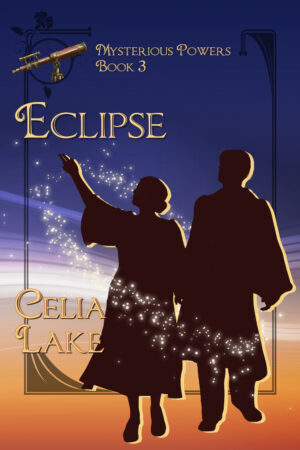 Eclipse
Eclipse
 On The Bias
On The Bias
 Chasing Legends
Chasing Legends
 Old As The Hills
Old As The Hills
 Upon A Summer's Day
Upon A Summer's Day
 Illusion of a Boar
Illusion of a Boar
 Three Graces
Three GracesYou can also find more of a number of these characters in various of the extras I’ve written and shared.
 A quick word about me
A quick word about meI’m currently in the “Yeah, neurodiverse is a reasonable descriptor” space when it comes to myself. I haven’t pursued testing. (My current day job is pretty good for how my brain works and I don’t need to consider additional accommodations).
Learning more about what works for me (and what doesn’t) has definitely been helpful, however. And of the characters below, Thesan is definitely the one nearest what the inside of my head is like a fair bit of the time. Though we’ve got different specific interests!
Cadmus MichaelsThe thing about Cadmus is that he’s of a specific and accepted autistic type for Britain in the early 20th century. He’s an eccentric, something of a hermit, with his own particular interests. Leave him alone in a decent library and everyone’s happy. In Seven Sisters, he’d just like to have time to translate Herodotus. Cadmus will be making an appearance as a secondary character down the road. His nephew Farran will be getting a romance in the Mysterious Arts series.
Elizabeth MasonMason appears in multiple books, but her ADHD is most visible in Pastiche (in 1906) and Complementary (her F/F romance in 1910). There’s a note about the Penelopes at the end of this article, but she’s one of the standard modes of Penelope. She’s a magpie for knowledge, she loves bouncing from problem to problem. And when she’s allowed to think the way she thinks best, she’s one of the best in the country at what she does.
(She does sometimes need reminding to turn in her forms and write things up. That’s part of why she and Agnes Witt, her longtime working partner, do so well together.)
Gabriel EdgartonI’ve had the great pleasure of writing Gabe at multiple points in his life. He’s six during most of Pastiche. He’s a young adult – just finished apprenticing – in The Fossil Door (his romance). And then we see him in his late thirties into his early forties in Old As The Hills and Upon A Summer’s Day.
The thing about Gabe is that he has the neurodiversity (absolutely rampaging ADHD) without having picked up the trauma that many neurodiverse people experience. Gabe had the great good luck to have parents who might not always understand him. Often, that’s Richard, Gabe’s father, who loves him but who is baffled by his son on a regular basis. As in the quote below…
“How did you get from your challenge to colours for Holi?” Richard had to ask, and for several reasons.
That got Gabe throwing his head back, a long and loud laugh. “Hemington’s Fifth, one of the scribal errors from Erasmus Minor, the implications for fixatives, that thing Sorcha taught us about blaeberries, the way shed snake skin reacts in potions work, and stumbling into a patch of blackberries?” He laid out the chain almost casually. Long experience of his son had taught Richard how to follow it once it was laid out. But he would not have made half those jumps, even allowing for the fact Gabe had a vast store of obscure magical lore in his head that Richard did not.
Upon A Summer’s Day – chapter 13
But you can support someone without understanding them entirely. Gabe’s parents could and did help him find how to make his way in the world. (Again, see the general comments about the Penelopes below.) And they were able to give him adults in his life who thought about the world in different ways, which makes a big difference.
By the time Gabe’s a protagonist, he’s figured some of this out. But he hints a few times that he had a rather lonely and complex time at school, before he figured out how to get along with other people better.
Golshan SoltaniGolshan also has fierce ADHD – bees in his head, as he might describe it. In Casting Nasturtiums, he’s initially dealing with all the challenges of that when he’s limited to a wheelchair and – more relevant – boring environments. By Shoemaker’s Wife, a year or so later, he has plenty to keep him busy mentally (and physically). It’s also easy to see why he found his pre-War life coordinating vaudeville acts a constant delight. Plenty of problems to solve, lots of novelty, and a wide range of people to talk to.
Hypatia WardOne of the two clearly autistic characters in Illusion of a Boar, Hypatia has taken the quieter road. She doesn’t always understand some of the social dynamics – but she won’t let it show. She’s passionately excellent about her particular field, but she knows it’s one most people don’t grasp. It takes the forced proximity of several other people to help her figure out how things could go a bit differently in her personal life.
Lewis WrightIt would be entirely reasonable, having read my books, to wonder if all alchemists are autistic. They probably aren’t all. However, in Albion, alchemy is definitely a high-status profession in which someone who is autistic (and inclined to alchemy) would excel. It allows for a range of kinds of work. But it also rewards understanding and following rules and consistency in practice.
Whatever the general truth is, Lewis is definitely autistic. He wants to do the things he wants to do, while understanding the need for commercial considerations. Once he’s out away from the plot of Perfect Accord, he can settle himself into a life of his own particular set of excellence.
(His wife in due course handles most of the social business obligations, until they hire someone who can run a shop and do most of that for them. It’s a very practical solution.)
Lynet AlderIt’s a little hard to tell how much of Lynet’s emotions and reactions in Bound for Perdition are neurodiversity, and how much is recent grief. However, I’d argue it’s some of both. She struggles with the politics and social dynamics of the situation she’s in, and she starts with a disadvantage in background as well. People don’t take her seriously, and they don’t understand her craft or respect it. (Fortunately, she does find help along the way.)
Orion SisleyOrion would be the more obvious of the two autistic protagonists in Illusion of a Boar. When I got to chapter 7 of the book, and sent it off to Kiya, I got back “Orion’s autistic.” I couldn’t argue one bit.
That also made a lot more sense of his appearance in Eclipse, when he’s still at school. He’s stroppy and difficult for most of that school year, until Thesan suggests that Isembard break down the expectations more explicitly.
(One of my favourite scenes is the one in Illusion of a Boar where Orion turns up for supper, and Thesan and Isembard sort through what’s confusing him. I love how he trusts Thesan, in particular, to help him make sense. She can do it because while they don’t express what they’re feeling the same way, she understands the frustration and confusion.)
We will be seeing a bit more of Orion and how he views the world down the road, when I get to writing Claudio’s romance. (That’ll be out in early 2026. Got to set up some other aspects of the plot first!)
Thesan WainAs I mentioned above, Thesan is in many ways the character closest to the inside of my head, though the specifics of our interests are different. When Kiya nudged me when I was writing the 2021 post about neurodiverse characters, and pointed out Thesan is arguably autistic, I had to stare at it for a while.
But she is. She has a ton of systems for managing her life. They work quite well for her, as does her passion for a topic that gives her a great deal of scope. We see both in Eclipse, when she and Isembard are falling in love. And we see more of her pattern matching, the thing she’s trained herself for, in Three Graces.
We’ll also be seeing more of her as a secondary character in The Magic of Four, out in May 2024.
Thomas BentonI love Benton’s stalwart certainty. Like Cadmus, he’s a good example of a particular set of experiences being common at the time – and good for him. Benton came up in service in one of the great houses. Working below stairs had a lot of challenges and problems. But from Benton’s point of view, the expectations were always extremely clear. He knew what his duties were, even the social niceties were laid out.
During the Great War, he comes into Geoffrey Carillon’s orbit. And from there, it’s Carillon telling him what needs doing. Benton’s job is to figure out how to make that work, whether they’re on a foreign expedition or dealing with a country house party. Ancient Trust introduces both Carillon and Benton in 1922, and then there’s more of Benton’s excellent service and attention in Goblin Fruit, On The Bias (Benton’s own romance), and Best Foot Forward, among others.
Sometimes, it’s harder to tellIt can be very hard to distinguish a trauma response from neurodiversity at times – especially when the trauma is still fairly fresh. Reggie Hollis in Bound For Perdition is a good example. He’s more comfortable dealing with complex social situations than Lynet is, but he’s also had more experience and training doing it.
It’s also hard to tell where Robin Aelfdane fits. He’s clearly unlike some of his nearer family in some key ways, but was that his upbringing, him individually, or something else? You can read Fool’s Gold to decide for yourself. (And see more of Robin a few years earlier in Seven Sisters.)
When I was writing Illusion of a Boar, two of the POV characters (Orion and Hypatia) were pretty clearly neurodiverse. Claudio is pretty clearly neurotypical. Cammie? Well, Cammie’s a little more complicated. I make an argument in my Idea to Book post about Illusion of a Boar that involves a spoiler. If you’ve read the book, go check it out and see if you agree with me!
Sometimes I can’t tell, even having spent a lot of time inside a given character’s head. Both Geoffrey Carillon and Alexander Landry are entirely too good at masking (sometimes even from themselves) to make it easy to figure out how their brains work on a fundamental level. They have excellent coping skills for many things. They’ve both needed them. Best Foot Forward (and to some extent, Upon A Summer’s Day) are the most relevant titles to look at here.
The PenelopesFinally, that not about the Penelopes. For those not familiar, “Penelope” is the general term for the people who untangle complicated magical mishaps in Albion. They sometimes work with the Guard or the Courts when there’s a legal issue or investigation. But they’re also the people you call if a bomb dropped in the Blitz near your alchemical lab and you don’t know what broke in the glassware. Or when your elderly relative may have done something unfortunate with ritual magic and you don’t know if it’s safe to go in and check on them.
Kiya and I have been saying for a while that there are token Penelopes who are male, token Penelopes that are straight, and token Penelopes who are neurotypical. But there might not be anyone who’s all three at the same time. Their particular livelihood certainly benefits from thinking outside of the societal norms in varying ways, and being willing to explore alternate modes. Pastiche and Old As The Hills are especially relevant here, as is an arc of Illusion of a Boar and the related extras.
Forthcoming booksFinally, The Magic of Four, out in May, has another example. Leo Fortier is definitely autistic in the same vein as his mother, Thesan. It makes being 14 and at school rather a challenge in several ways, especially since he’s unwilling to bend or break rules. Like Gabe, however, he’s been blessed to have parents who support him in learning how he does things best. (Even if it makes his Uncle Garin annoyed.)
Avigail Edgarton is also very much her father’s daughter, but it’s not clear exactly how much of Gabe’s ADHD is in her head. She’s certainly inherited his curiosity and desire to know all the things, however.
And as I said above, if you read other characters as neurodiverse, that’s just fine with me! I can see arguments for a number of others.
The post Neurodiversity in my books appeared first on Celia Lake.



